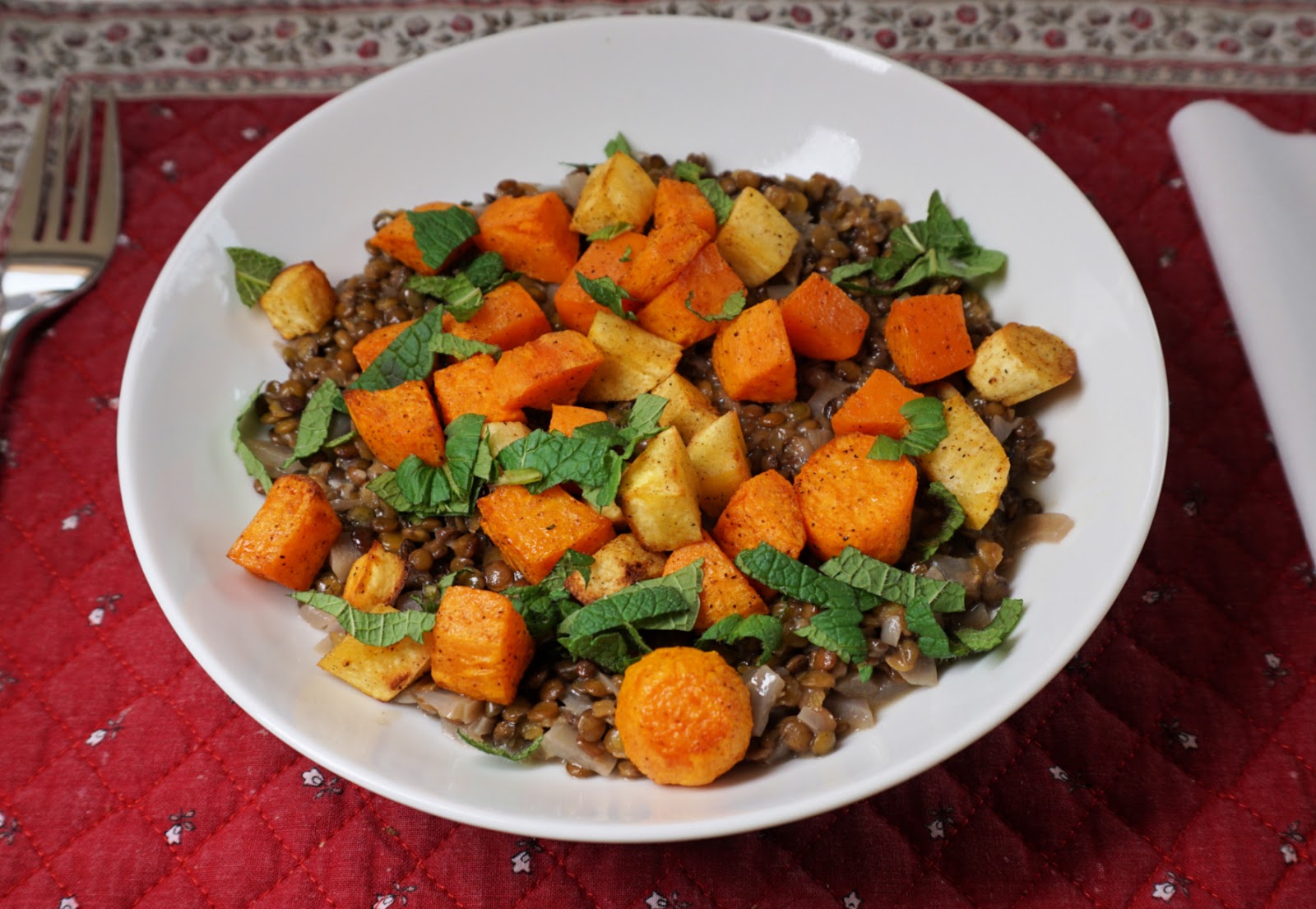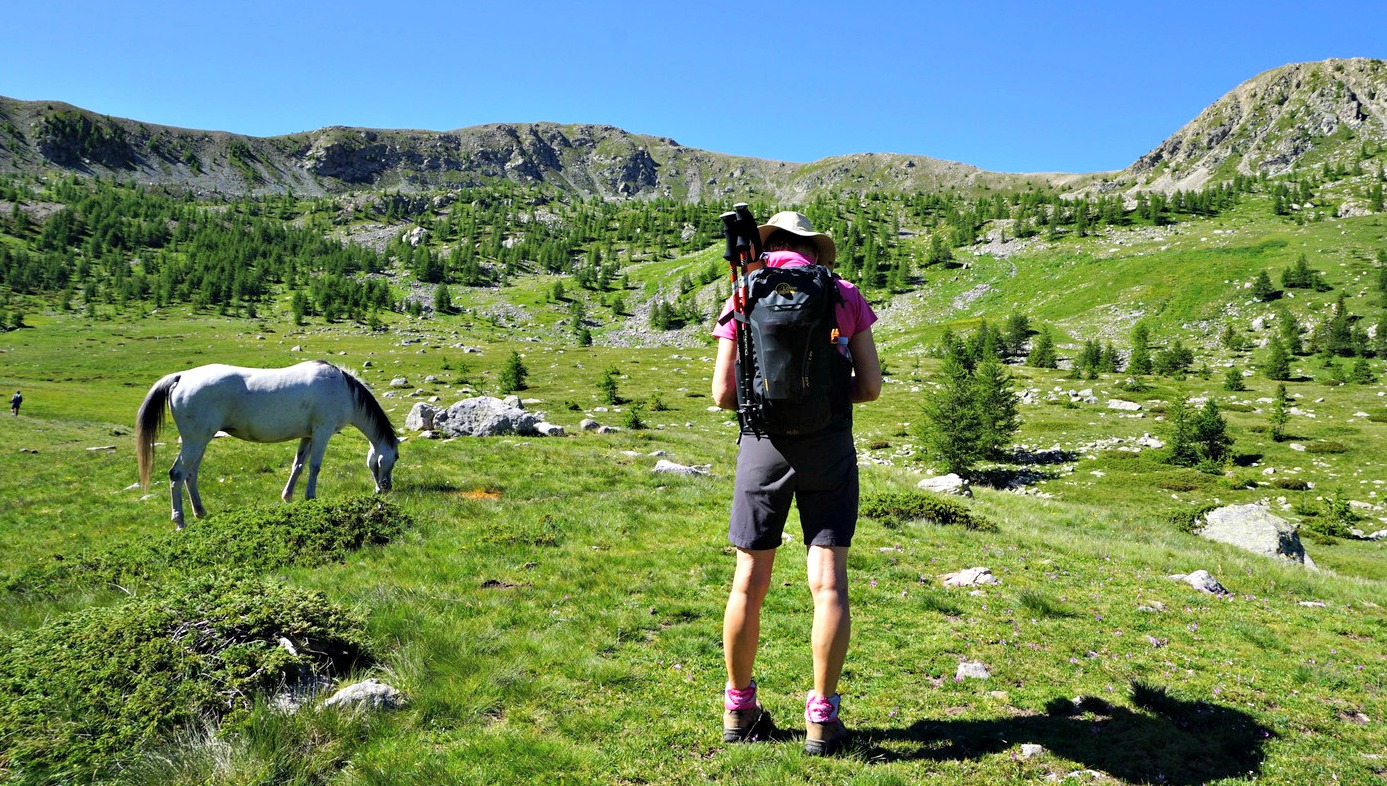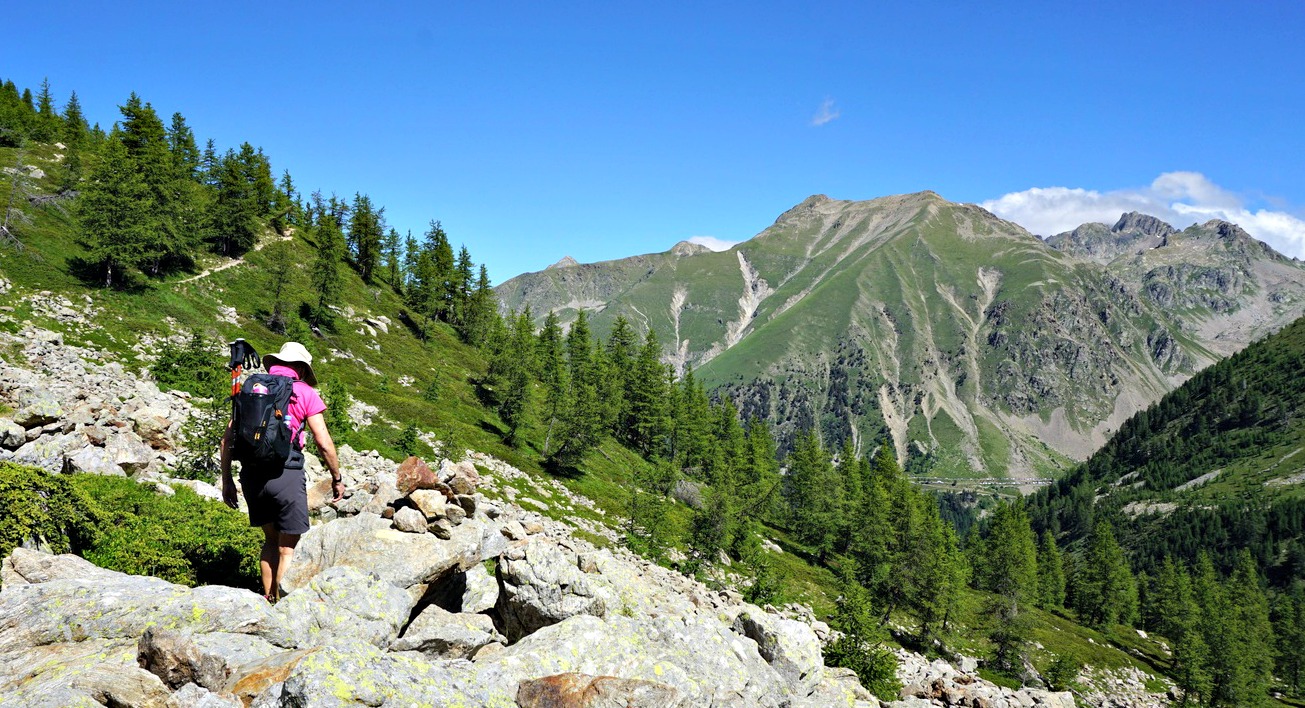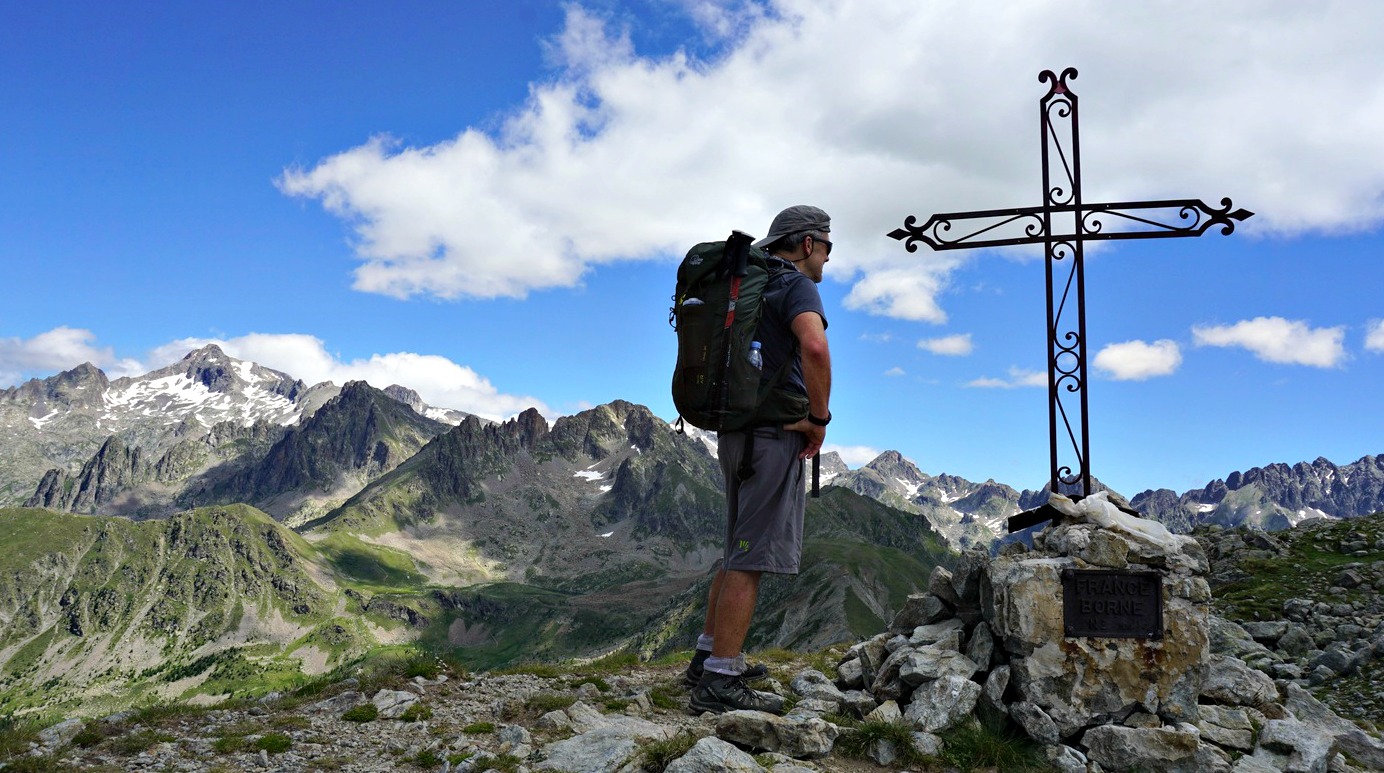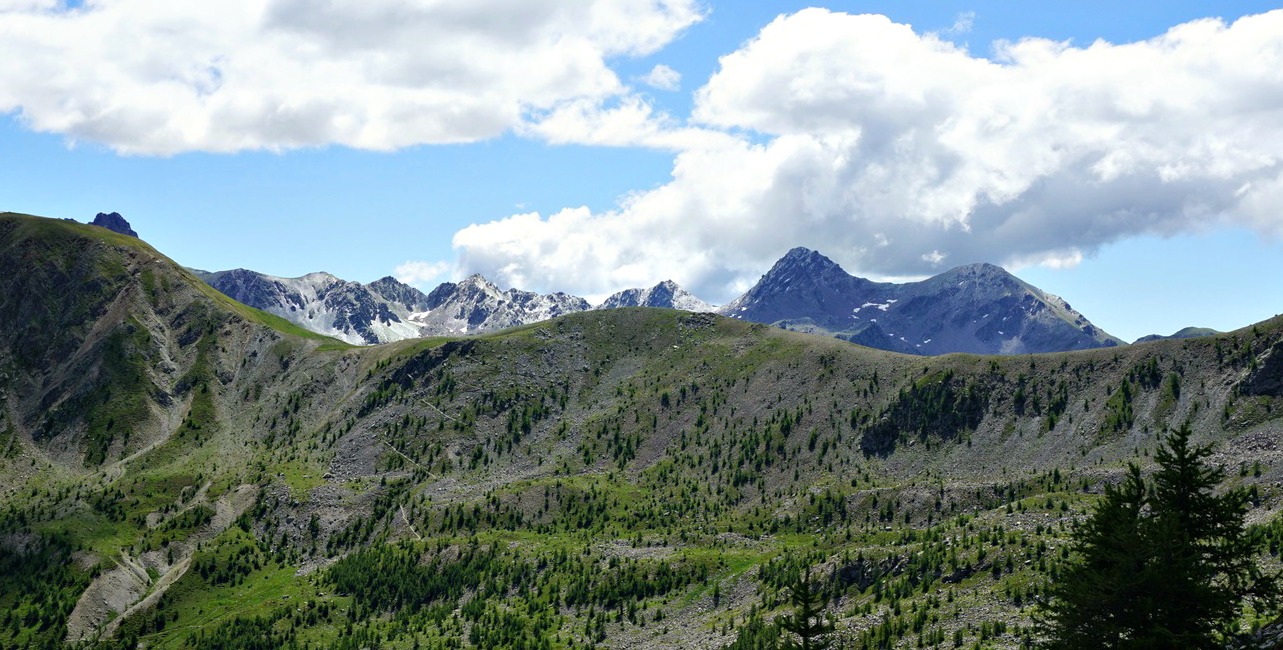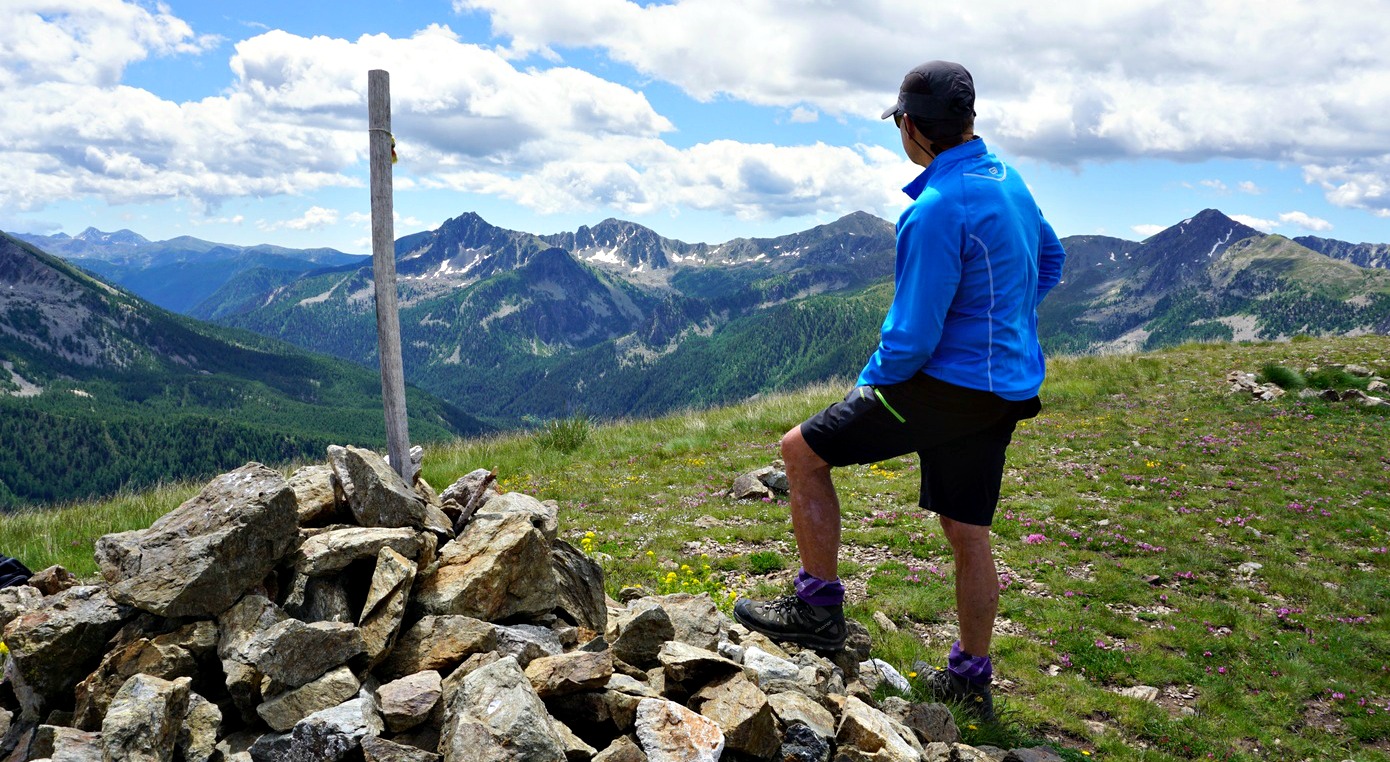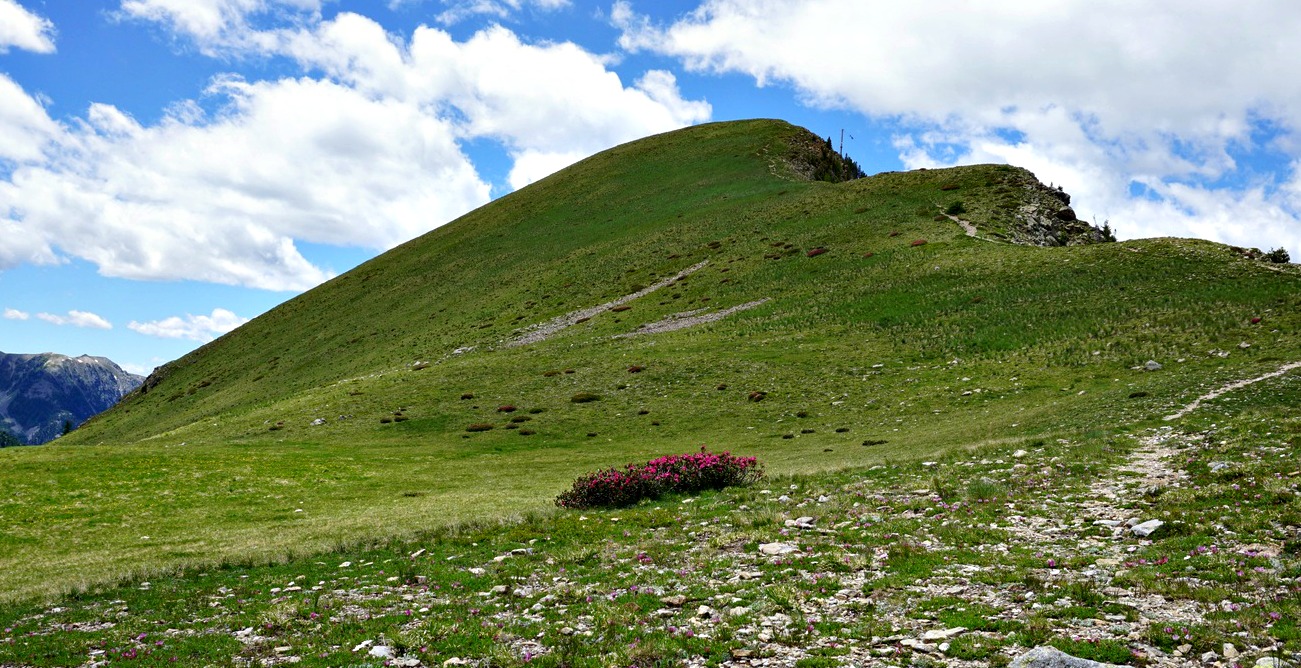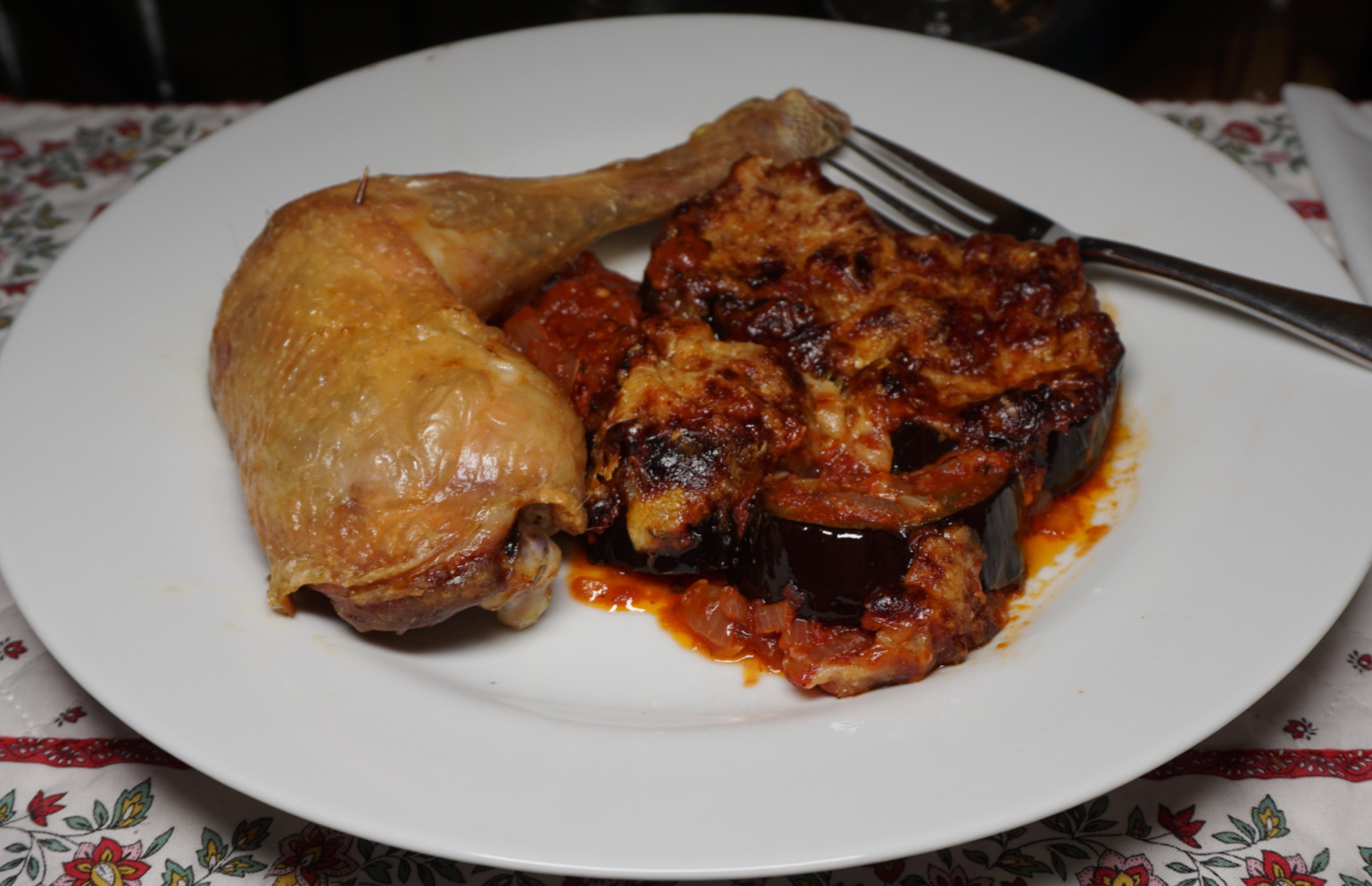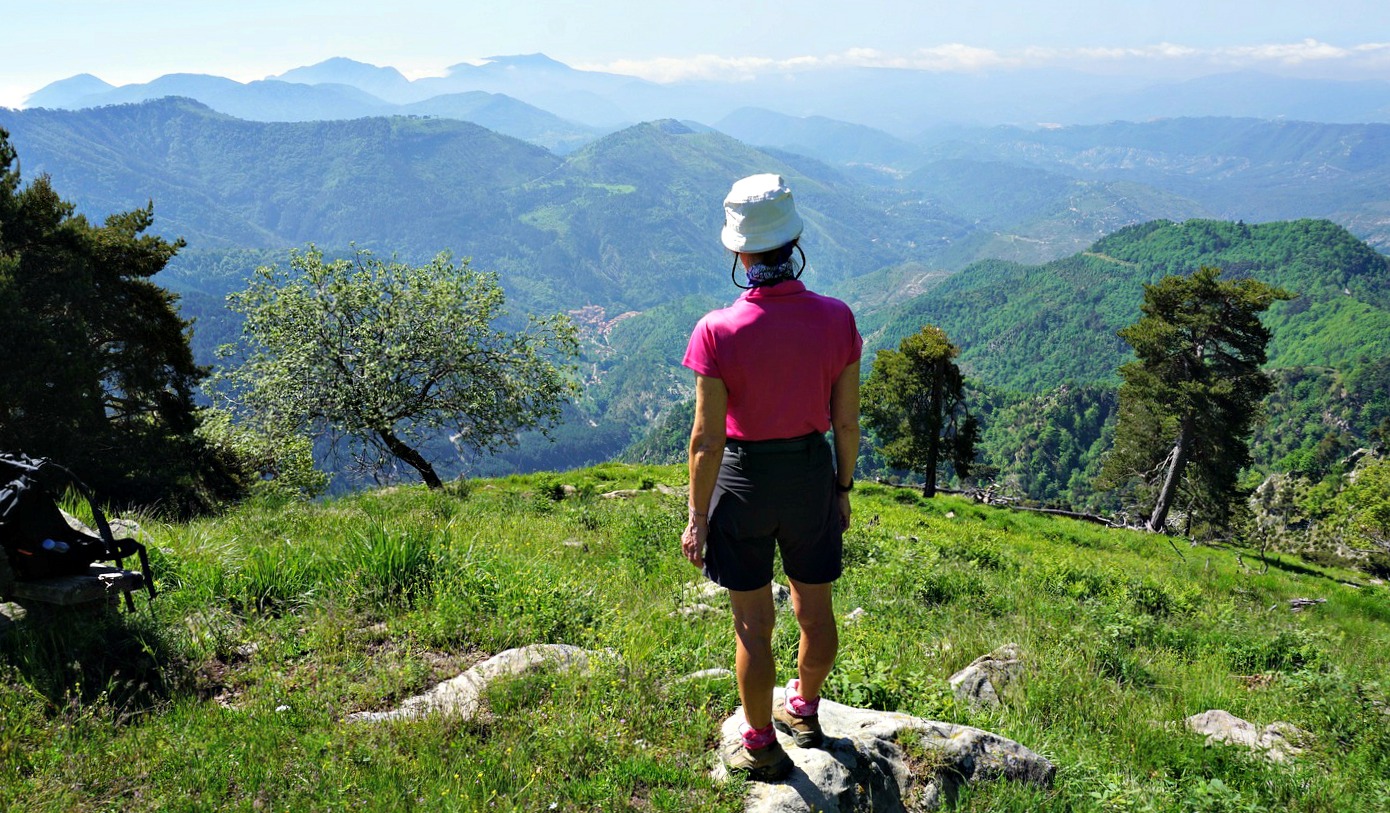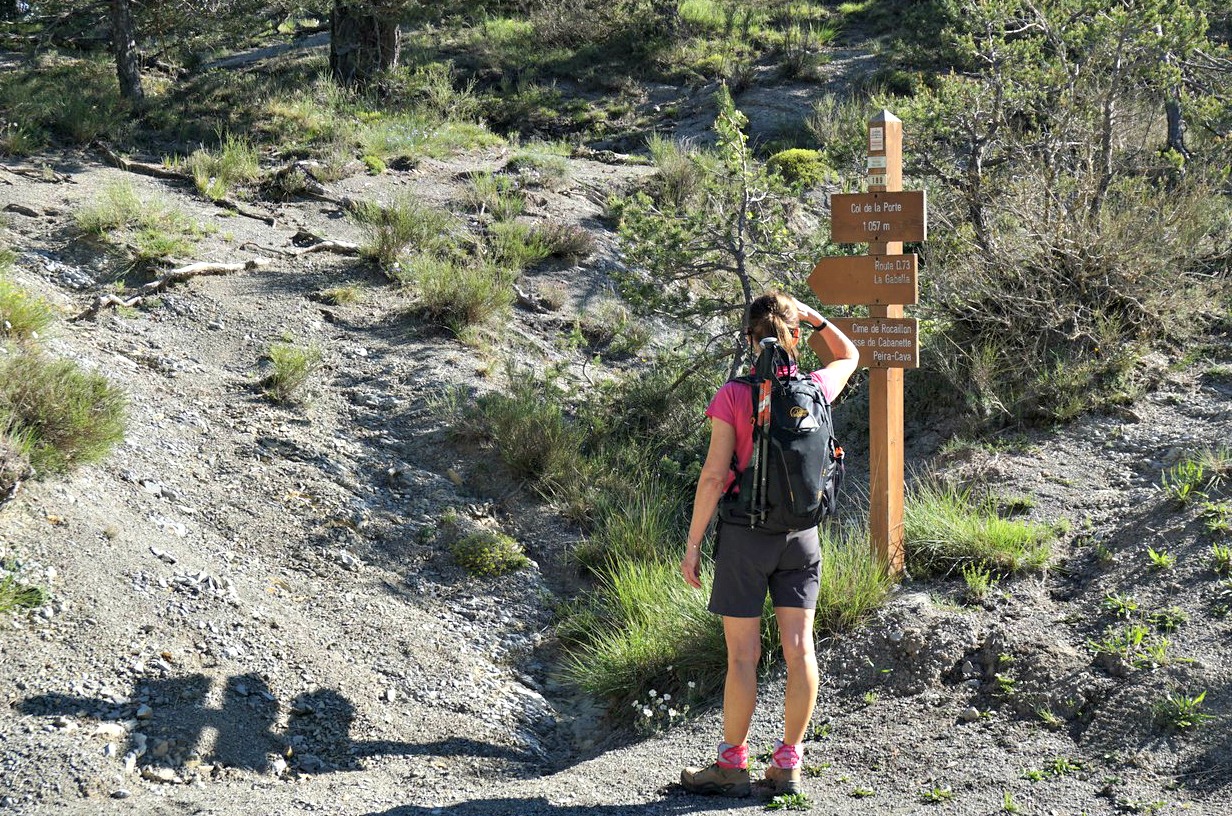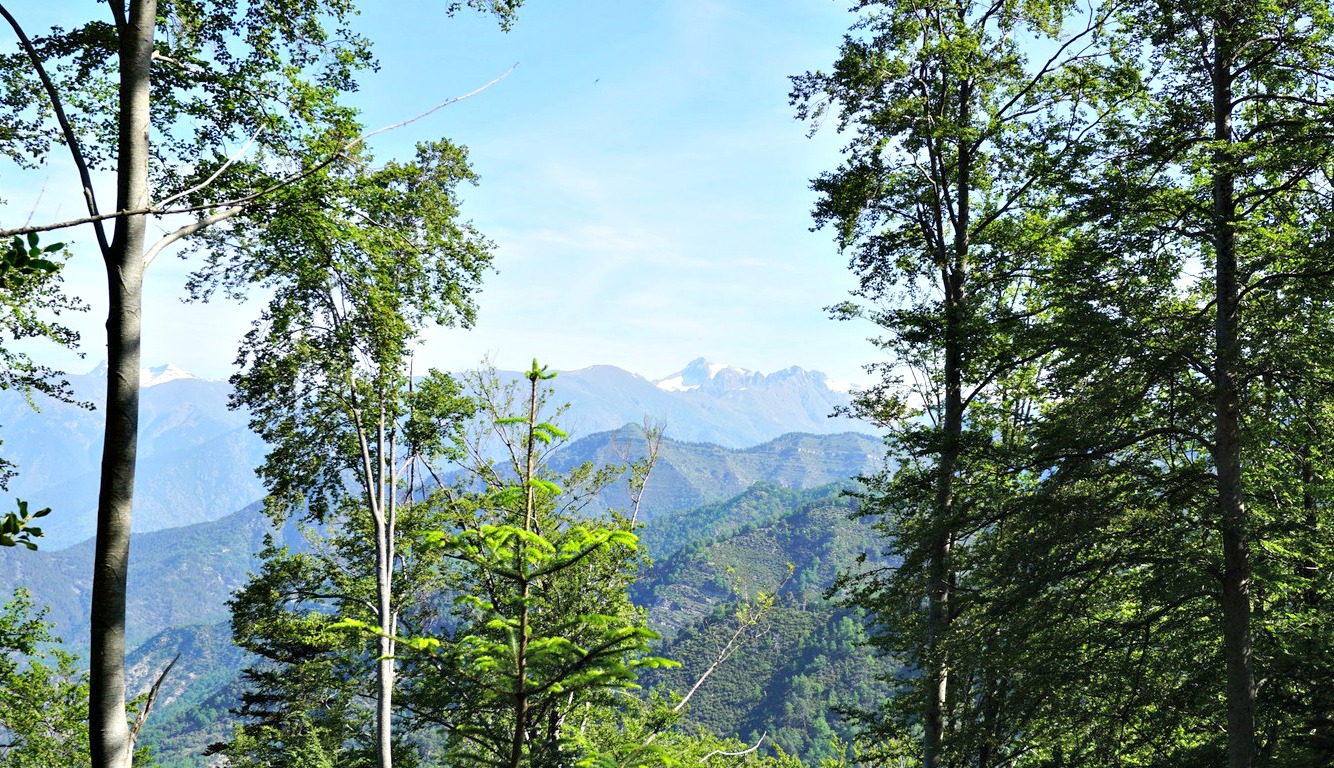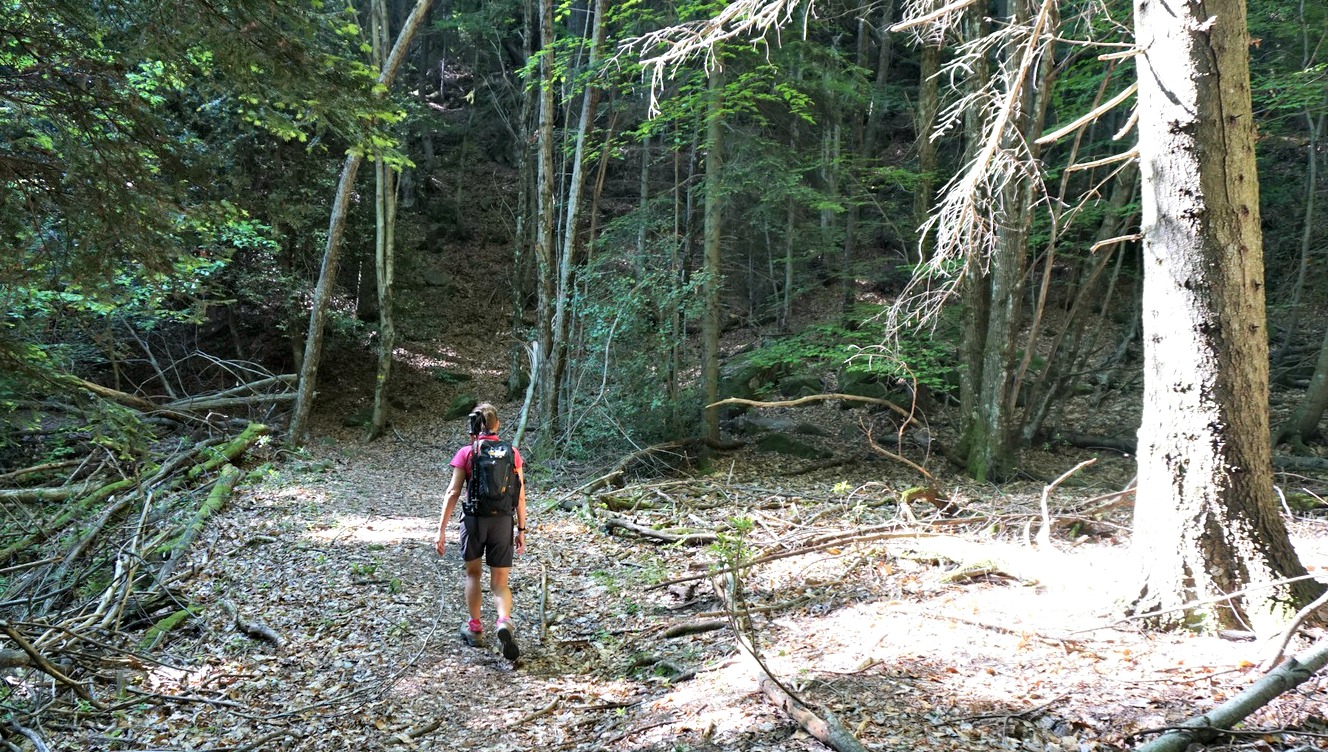Green lentil risotto and roasted root vegetables
This dish makes a great vegetarian lunch in winter. It is a good source of antioxidants and vegetable protein. If possible, choose organic vegetables and herbs.
For a balanced meal serve some green salad, olive oil vinaigrette, and good wholemeal bread. If you can’t find raz el hanout in your shops you can make a spice mixture by using equal amounts of ground cinnamon, ground ginger, black pepper and ground paprika.
2 servings
For the green lentil risotto:
120 ml green lentils
1 small onion, chopped
1 clove garlic, minced
2 tbsp. olive oil
150 ml white wine
About 600 ml chicken stock (you may not use it all)
A generous handful of freshly grated parmesan
For the roasted root vegetables:
1 medium sweet potato
1 medium parsnip
1 tbsp. olive oil
1 tsp. raz el hanout
Chopped fresh herbs to decorate
Start with the green lentil risotto which takes about 30 minutes to cook. Warm the olive oil in a heavy casserole over medium-low heat and gently sautè the onion and garlic for about 10 minutes.
Then add the lentils and stir well so that they are coated with olive oil. Increase the heat to medium and continue cooking like you would a classic risotto by adding first small amounts of white wine and then chicken stock. NB! You don’t need to stir all the time because lentil risotto won’t achieve the same creaminess as classic rice risotto. The cooking time is about the same, 20- 25 minutes.
When the lentils are cooked, remove the casserole from heat and stir in the parmesan.
Meanwhile roast the root vegetables. Preheat the oven to 200°C, roast.
Peel the root vegetables and chop into smallish chunks. Place 1 tbsp. olive oil in a plastic bag with 1 tsp. raz el hanout and add the root vegetables. Give the plastic bag a good shake, then place the vegetables in a single layer in an oven-proof dish. Roast for about 15-20 minutes until the vegetables are soft.
Divide the green lentil risotto in the bottom of the bowls and the root vegetables on top. Decorate with fresh herbs.


